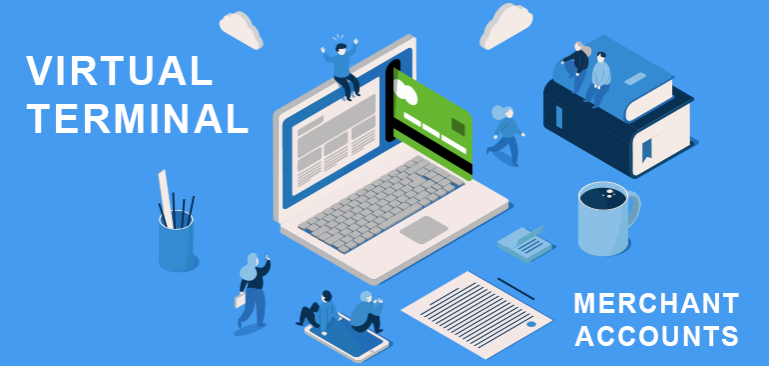In an increasingly digital world, the ways in which businesses handle transactions have evolved. The emergence of virtual terminal credit card processing has revolutionized the payment industry, offering a flexible alternative to traditional point-of-sale (POS) systems. At RapidCents, we understand the critical role payment processing plays in your business. This article delves into the intricacies of virtual terminals, highlighting their distinct advantages over conventional POS systems.
Understanding the Virtual Terminal
A virtual terminal is an online system that allows businesses to process credit card transactions without the need for physical hardware. Unlike traditional POS systems that require a card-present transaction, virtual terminals enable merchants to enter credit card details manually or through a customer’s online submission.
The virtual terminal payment processing system is hosted online, often requiring nothing more than a computer or a mobile device with an internet connection. This capability has become a cornerstone for e-commerce businesses and service providers who deal with remote billing.
The Traditional POS System Explained
In contrast, a POS system is a combination of software and hardware designed to facilitate on-site transactions. It typically involves a register, a card reader, a receipt printer, and other peripheral devices. POS systems are commonplace in retail stores and restaurants where physical customer presence is a given.
Virtual Terminal vs. POS: The Key Differences
Hardware and Setup
The most significant difference between a virtual terminal and a POS system is the hardware requirement. Virtual terminals do not require specific hardware except for a computing device and internet access, making them a cost-effective option for many businesses. POS systems, on the other hand, can be costly due to the required setup of multiple hardware components.
Mobility and Flexibility
Virtual terminals offer unparalleled mobility. They can process payments from anywhere, at any time, as long as there is internet connectivity. POS systems are typically stationary, confining transaction processing to a physical location.
Transaction Environment
Virtual terminals are designed to handle card-not-present transactions, which is a standard for online stores and businesses that take orders over the phone or via mail. POS systems cater to card-present transactions, where the customer’s card is swiped, inserted, or tapped against the terminal.
Costs and Maintenance
When it comes to costs, virtual terminals often have lower upfront expenses compared to POS systems. The maintenance and updates for virtual terminals are also less cumbersome, as they are usually managed remotely by the service provider. POS systems may require regular maintenance and can incur additional costs for software updates and hardware repairs.
Why Businesses are Transitioning to Virtual Terminals
The shift towards virtual terminals is driven by the need for businesses to adapt to the changing landscape of consumer behaviour. With an increase in online shopping and telephonic orders, the ability to process payments remotely has become a necessity. Virtual terminals provide a secure and efficient way to handle such transactions.
Security is a paramount concern in virtual terminal credit card processing. At RapidCents, we ensure that our virtual terminals are equipped with robust security measures to protect sensitive payment information. Compliance with PCI DSS standards and the implementation of encryption and tokenization are some of the ways we maintain high security.
RapidCents’ Approach to Virtual Terminal Solutions
Embracing virtual terminal solutions is streamlined with RapidCents. We prioritize seamless integration into your existing business model, ensuring minimal disruption to your operations. Our solutions are designed to grow your business, offering scalability that traditional POS systems often lack.
RapidCents is a PCI-compliant payment processing company, and it’s safe and secure.
RapidCents provides comprehensive customer support to ensure that the transition to a virtual terminal is smooth and that any questions or concerns are addressed promptly. Our aim is to empower your business with the tools it needs to succeed in the modern marketplace.
Conclusion
The differences between virtual terminals and POS systems are clear. Virtual terminals offer flexibility, reduced costs, and the ability to process transactions remotely. They represent the future of payment processing, a future that is adaptable, secure, and efficient.
Businesses looking to stay ahead in the digital era can no longer overlook the advantages of virtual terminal payment processing. With solutions like those offered by RapidCents, the transition to a more flexible payment processing system is not just simple—it’s a smart strategic move.








